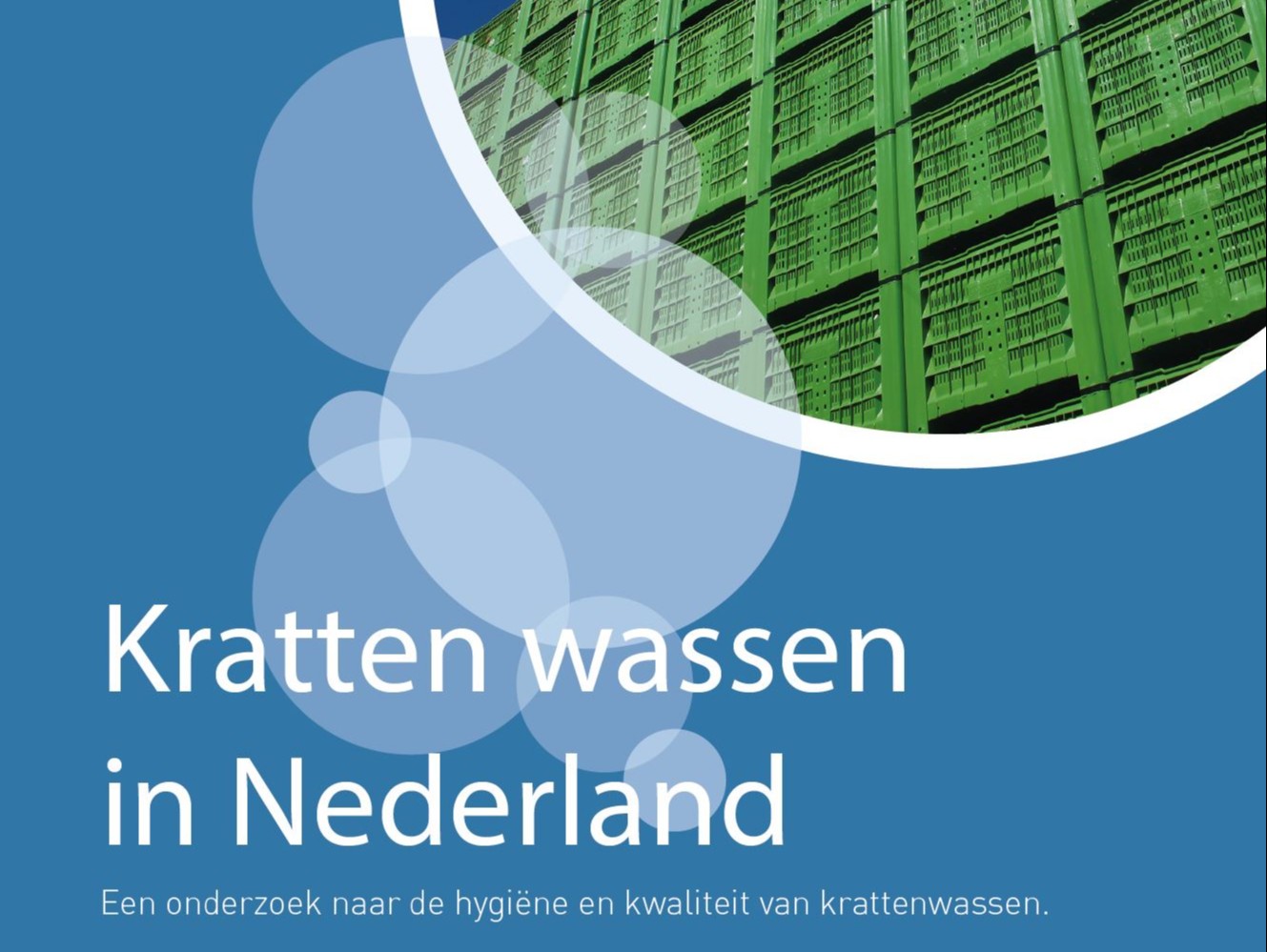
At least 56% of the companies do not carry out hygiene inspections after cleaning crates for food and goods. This is the conclusion of independent research into the hygiene and quality level of crate washing in the Netherlands. This percentage is based on the respondents who dared to answer this question. If the companies that did not want to answer this question are included, this percentage could be much higher.
The government is imposing increasingly strict requirements on the testing and quality of the washing process of crates for food and goods. Each sector also has its own hygiene code. With these hygiene codes, increasing attention is paid to cleaning and testing the quality of the cleaning. Nevertheless, more than half of them do not test whether their crates are hygienically clean after washing and whether they meet the standards set.
The most common problem that leads to unhygienic situations is the sticker residue that remains after the washing process. Bacteria and germs that cause cross-contamination remain in the sticker residue. Germs and bacteria, which actually occur at the end of the production chain, are thus brought back to the beginning of the production chain. In doing so, they endanger food safety. Because the sticker remnants are difficult to remove, many companies ultimately leave them in place.
Only 32% of the companies test in their own laboratory or quality department whether the crates are clean after washing and whether they meet the quality requirements. 12% of the companies work together with an external laboratory. And the remaining 56% (!) does not test whether the crates are clean after washing and whether they meet the quality requirements. 50% of the interviewees indicated that they have to deal with the problem of remaining sticker residues and 90% of them washes the crates internally.
Many companies do not have the capacity and resources to carry out quality controls. 97% of companies with up to 10 employees wash the food and goods crates internally. Among the companies with 10 to 20 employees 84% wash internally and all of the companies participating in this survey with 20 to 50 employees wash internally. Companies over 50 employees more often have their food and goods crates cleaned by external companies or cooperate with quality control laboratories. Also in this category, a significant proportion of companies do not test whether the crates are hygienically clean after washing and whether they meet the set standards.
The fact that companies do not comply with the hygiene code applying to their sector is reason enough to worry about food safety. Bacteria and germs that actually occur at the end of the production chain are transported back to the beginning of the production chain by sticker residues. But perhaps even more worrying is the fact that many companies did not want to answer the question about the quality control of their washing process. This gives the impression that the percentage of 56% would be even higher if everyone answered the question honestly.
Download the complete study (Dutch only)
Source: CleanMachine